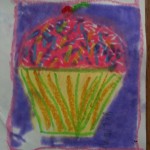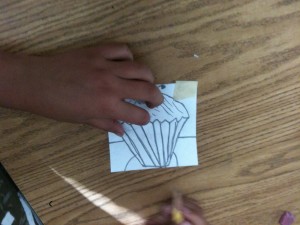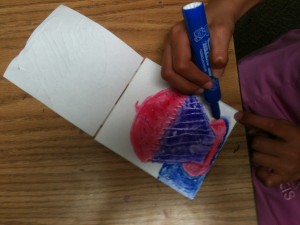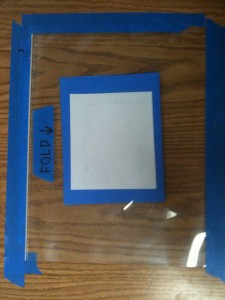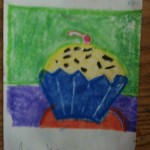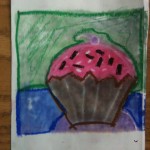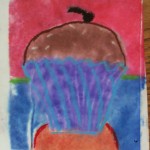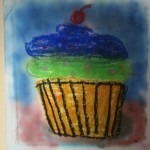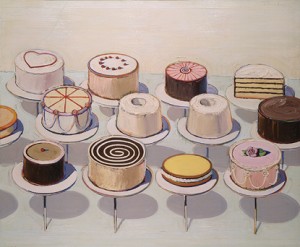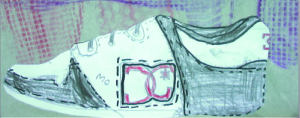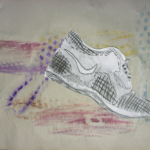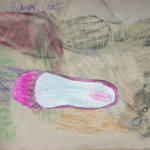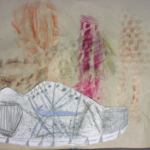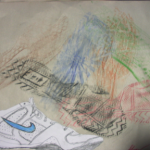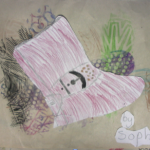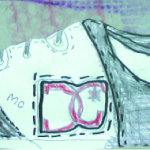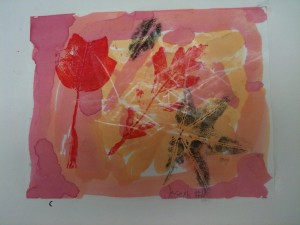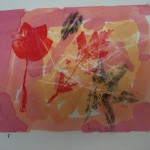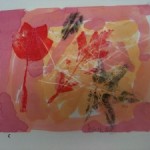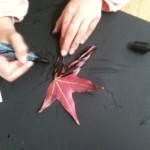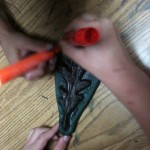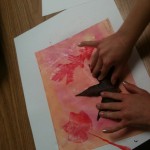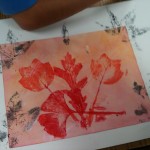Maybe you have used scratch foam for printmaking in the art room. I’ve seen a lot of beautiful art work using scratch foam and printer’s ink applied with brayers. But did you know scratch foam prints can look like this?
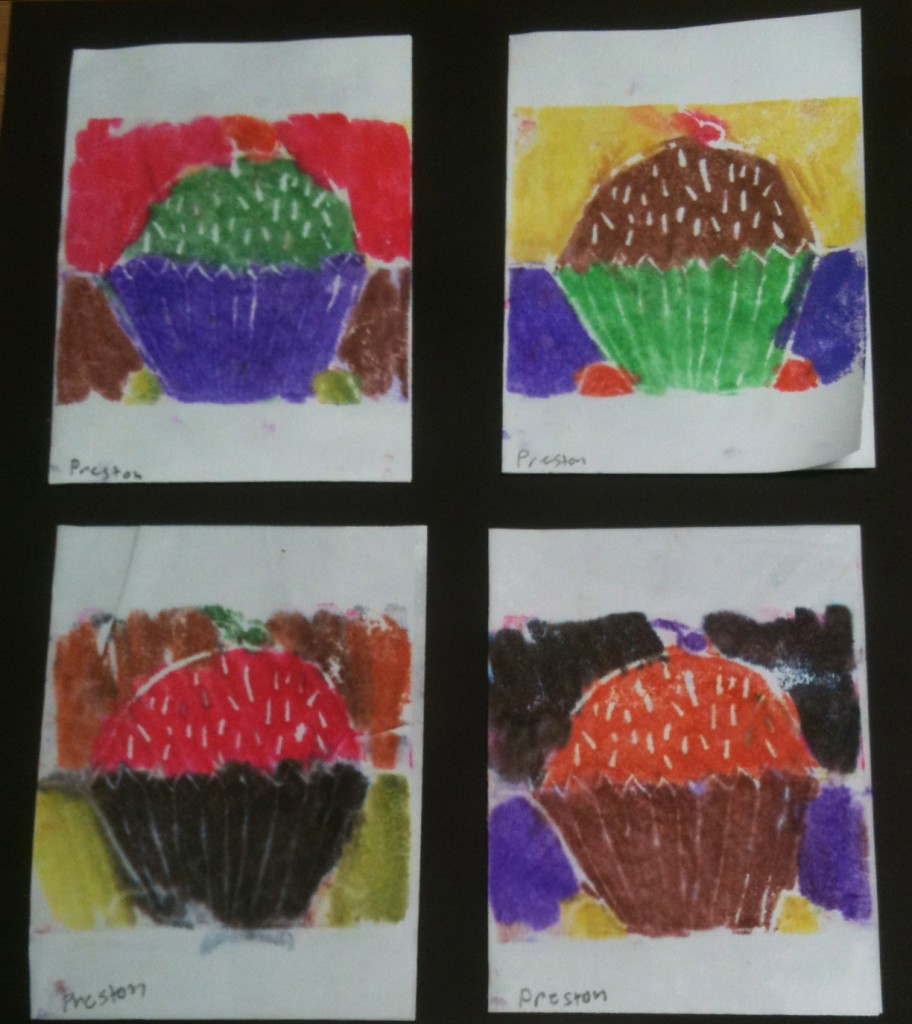
This set of four cupcake prints were all made from the same scratch foam plate during a single 40-minute class.
3rd graders used watercolor marker and scratch foam to create multiple prints. We did an easy directed drawing of a cupcake onto scratch foam, colored the foam with watercolor markers, and then printed the cards onto damp paper.
Materials:
- Scratch foam, cut to desired size
- sketch paper, cut to same size as foam
- dull pencil
- masking tape
- watercolor markers in assorted colors (I use Mr. Sketch markers)
- oil pastels or other embellishments (optional)
- shallow tub (dishpan) of water
- beach towel (several if you are teaching multiple or large classes)
- plastic sleeve protectors for printing station
- white construction paper for printing – cut larger than scratch foam
Prep:
Set up a printing station. Fill tub with water depth of 2-3 inches. Set out a folded towel. Tape a sleeve protector to the table. Slide in an alignment sample (see below). Cut a stack of printing papers, enough for each student to make at least 3 prints. Think about drying space (always an issue when printing multiples). Drying rack? Clothes line?
Drawing
- draw cupcake onto sketch paper. Click here for my step-by-step how to draw a cupcake instructions.
- Remind students: NO LETTERS, NO WORDS, NO NUMBERS.
- tape sketch paper on top of scratch foam.
- go over cupcake sketch with a dull pencil. The lines should transfer to the scratch foam below.
- pull up the paper. Drawing directly on the foam, go over any lines you missed with the pencil. You can also add sprinkles or other small lines at this time.
- discard the sketch paper and tape.
Inking
- use the watercolor markers to ink the scratch foam. Students should use multiple colors. Fill the scratch foam completely with color.
Printing
- take your foam to the printing station.
- write your name in small letters on white construction paper. Use pencil.
- dip white construction paper in water
- put wet paper in folded towel to blot
- align inked scratch foam on sleeve protector INK SIDE UP
- put damp white paper on scratch foam NAME SIDE UP (align using the sleeve protector)
- rub paper firmly without wiggling
- PULL THE PRINT
http://www.youtube.com/watch?v=sAY0pGj7c7g&rel=0
The third graders were amazed!!!! Vibrant colored cupcakes for their beautiful birthday cards.
ARE YOU READY FOR EVEN MORE FUN?????
Re-inking
- Students re-ink the scratch foam plates using a different color scheme. It doesn’t matter if the plate still has a little color on it – go right over the plate with a different color.
Print again!
Students should carefully sign their name on the back of the foam plate WITH PENCIL. Write small.
A word of caution: as always, test this project out yourself before attempting with your students.
1) The degree of dampness of the printing paper is critical. Too dry and the ink won’t transfer to the paper. Too wet and the ink will bleed and blur as the paper dries. For blotting, a fresh beach towel is ideal. My towel was too damp by the third class of the day. I wish I had a couple of fresh dry ones with me. Next year!
2) Size of drawing matters. Tiny drawings the size of a thumbnail just won’t look good.
Day 2: Embellish Prints with Oil Pastels
Students have the option of embellishing their dry prints. These cupcakes are decorated with oil pastel. This is a great way to rescue students less-than-perfect prints. Can you imagine these with a little clear glitter and/or a sequin?
Next we trim our cupcake prints and glue them onto colored construction paper. What fabulous birthday cards for all our family and friends.
Fun – colorful – successful – easy to clean up!
This would be a great Wayne Thiebaud lesson plan – it relates to his dessert paintings in terms of subject matter and repetition.
A huge thank you to Carol Catelano Webb, master art teacher, who taught this printing process at a San Diego Art Educators workshop back in 2005.

